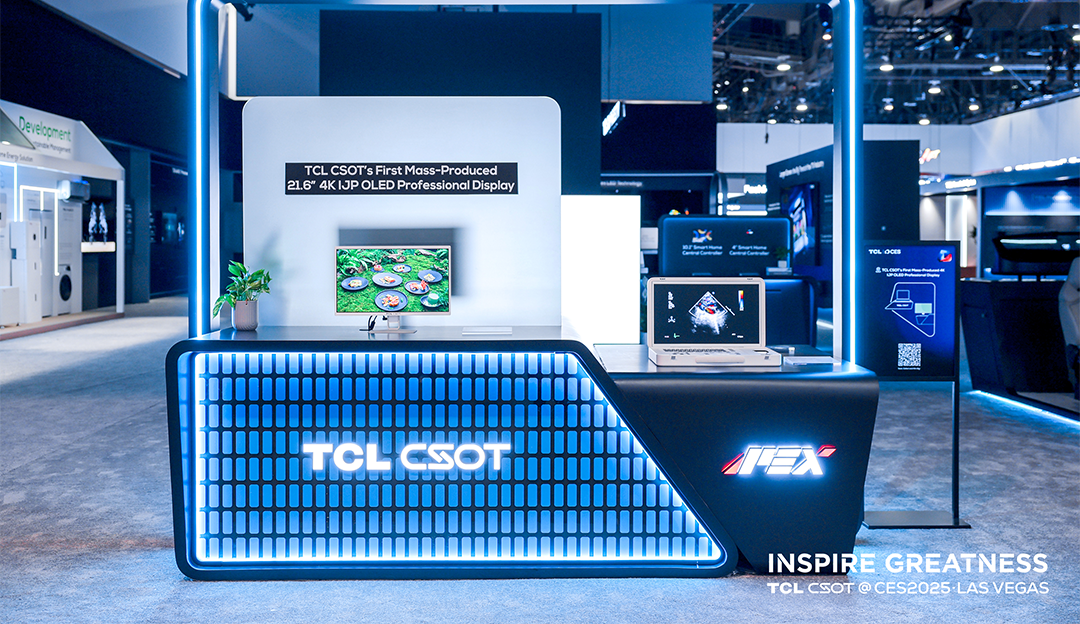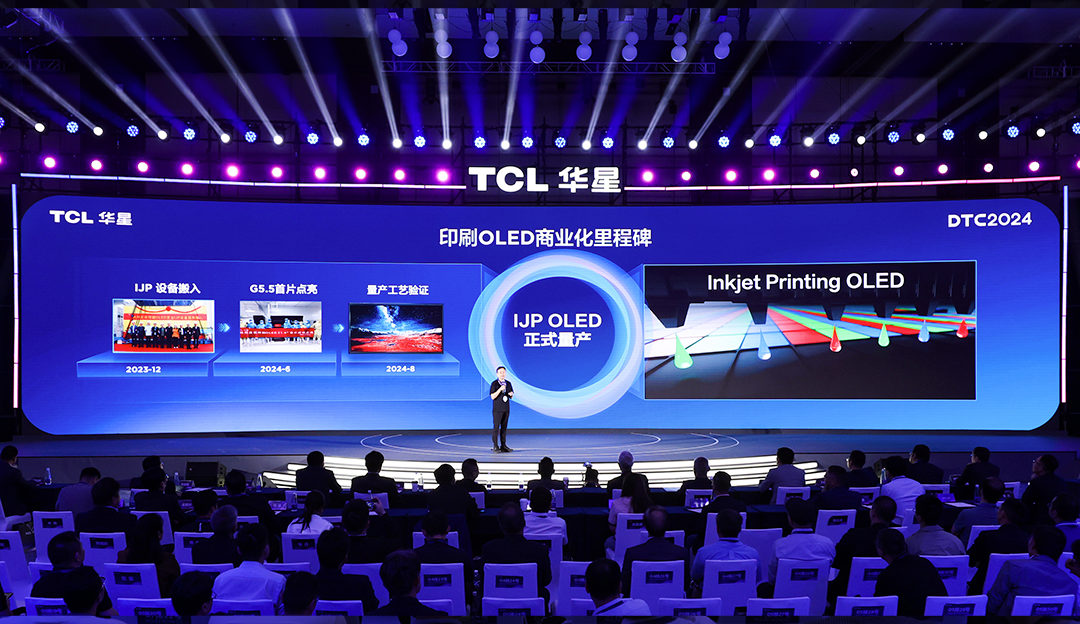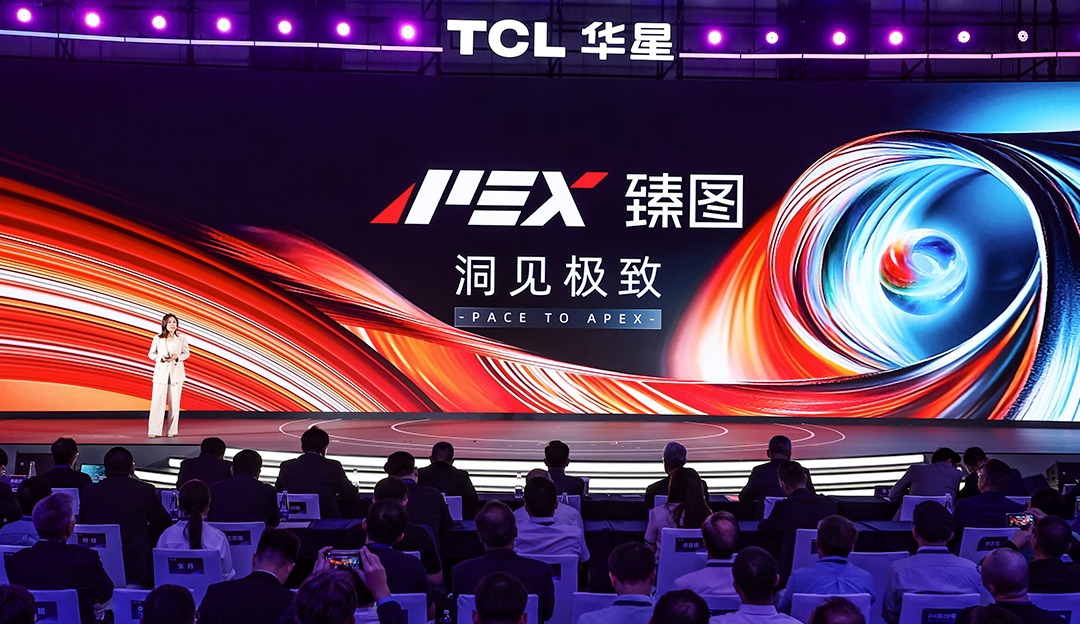TCL CSOT low-power display technology takes the lead in race of pony-size OLED
With the continuous development of display technology, products with high brightness, high refresh and high resolution are liked by many electronic equipment manufacturers. While the performance of smart devices are continuously optimized, the improvement of mobile phone endurance and in response to the national "double carbon" strategy, low power consumption and energy conservation have also become a main target of many terminal manufacturers. As the "power consumption" of the screen in the device, the promotion of low power consumption technology has become the new mainstream of the competition of panel manufacturers.
As a leading enterprise in the industry, TCL CSOT R&D team pays a close attention to the market demand, early lays out new low-frequency low-power display technology, independently develops LTPO, MLP, PLP and LTPS low-frequency low-power display technology, and commits to providing customers with more core high-end technology products.
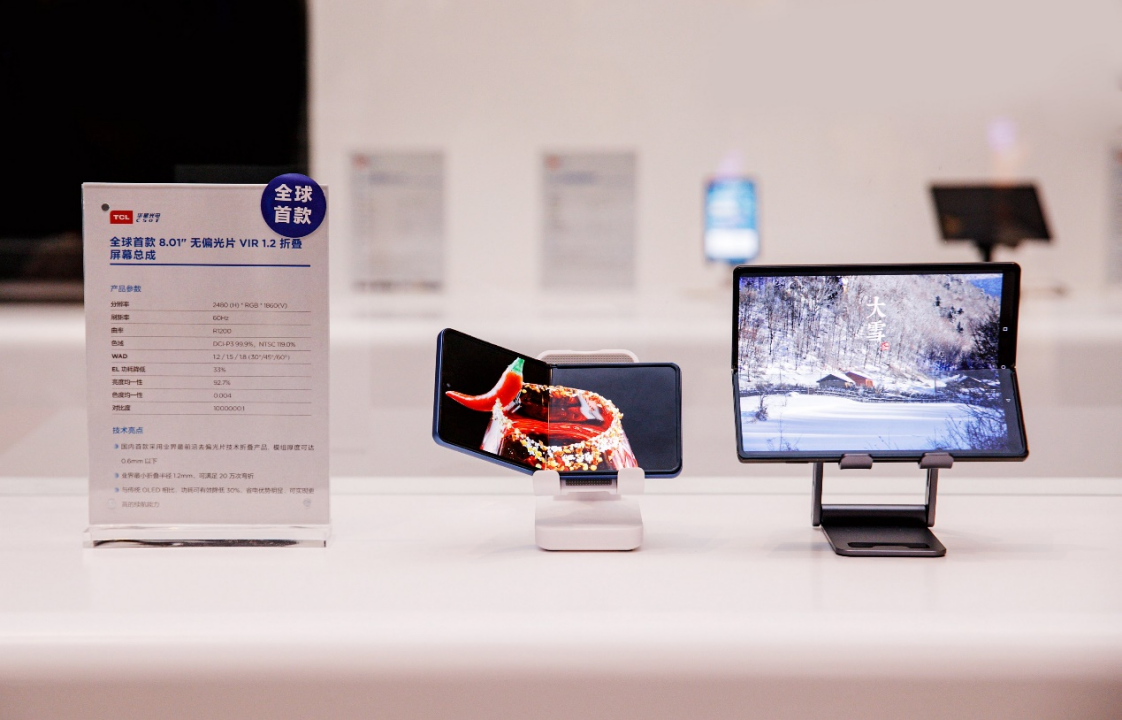
8.01" non-polarizer VIR 1.2 folding screen assembly
1Hz ultra-low refresh rate
As a technology constantly mentioned at the flagship terminal press conference, LTPO has become the standard configuration technology of the flagship. TCL CSOT has made many achievements in this field. TCL CSOT's LTPO display screen technology can be used to save more power through adaptive refresh rate. Due to the limitation of OLED screen refresh rate, the lowest refresh rate of mobile phones in the past can be about 10Hz, while LTPO display screen technology equipped with TCL CSOT can be used to achieve the lowest refresh rate as low as 1Hz.
The LTPO screen of TCL CSOT can be used to achieve ultra-wide frequency range switching from 1 to 144Hz. More frequency points can be switched to strengthen the optimization of scene segmentation. For example, in WeChat, the frequency in sliding fast browsing is 144Hz. The display screen is not be changed significantly when sending voice, which will be reduced to 30Hz, while in fast typing, it will be adjusted to 60Hz, realizing the fine management of high brush, so that every power consumption can be used more thoroughly.
Efficient lighting
TCL CSOT uses the material characteristics of the product to prepare microlenses on the EL of each sub-pixel of OLED by photolithography through MLP (Micro Lens Panel) technology. By introducing materials with high refractive index, the light emitted by EL is refracted directly at the interface of the lens, and the mobile phone screen is brightened by focusing light to maintain higher brightness under the same power consumption, which is conducive to screen visibility.
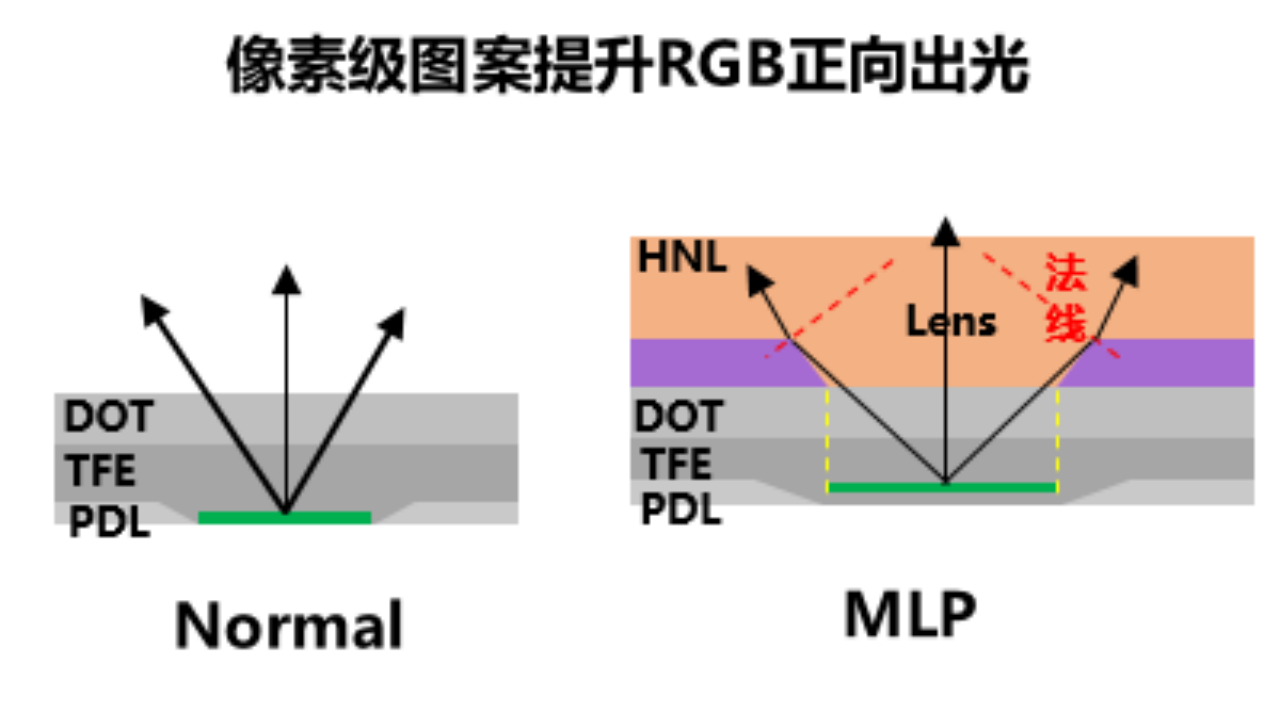
The MLP technology of TCL CSOT is a mass production technology that improves the forward light output of the screen through the combination of pixel level graphic array as well as high and low refractive index. The introduction of MLP technology can reduce the overall power consumption of the display screen by about 10-15%. The LTPO+MLP low-power combination technology independently developed by TCL CSOT has been preliminarily developed. It is estimated that the power consumption at low frequencies can be reduced by about 30%. By then, with the LTPO technology, the equipment will be accurately controlled in a refresh form, and the "green energy-saving technology" can also be used to achieve saving power.
Ultrahigh gamut
TCL CSOT realized the "improvement" of OLED display screen through PLP technology (Pol less). Conventional OLED components are made from circular polarizers to reduce the impact of external incident ambient light on the display effect. Although the display effect is excellent, the polarizer will increase the device thickness by about 50~100 μ. Meanwhile, more than half of the brightness is lost. Therefore, PLP technology can further reduce the thickness of OLED panel by about 20% by improving the OLED screen and directly produce the optimized color filter film on the screen. At the same time, it can play a role in improving screen brightness and reducing power consumption. In addition, the WQHD LTPO+PLP combination technology of TCL CSOT has been ready, and the production line of t4 project will have a mass production capacity of 15K LTPO in the future.
Smart refresh rate saves more power
In terms of low-power display technology, TCL CSOT has developed a new way of low-frequency LTPS (LTPS Plus) technology in addition to the current mainstream technology route of LTPO. On the basis of conventional LTPS, through design, drive and process optimization, the LTPS display can be lower than 30Hz, and achieve the display effect of low frequency, low flicker, low power consumption and low cost.
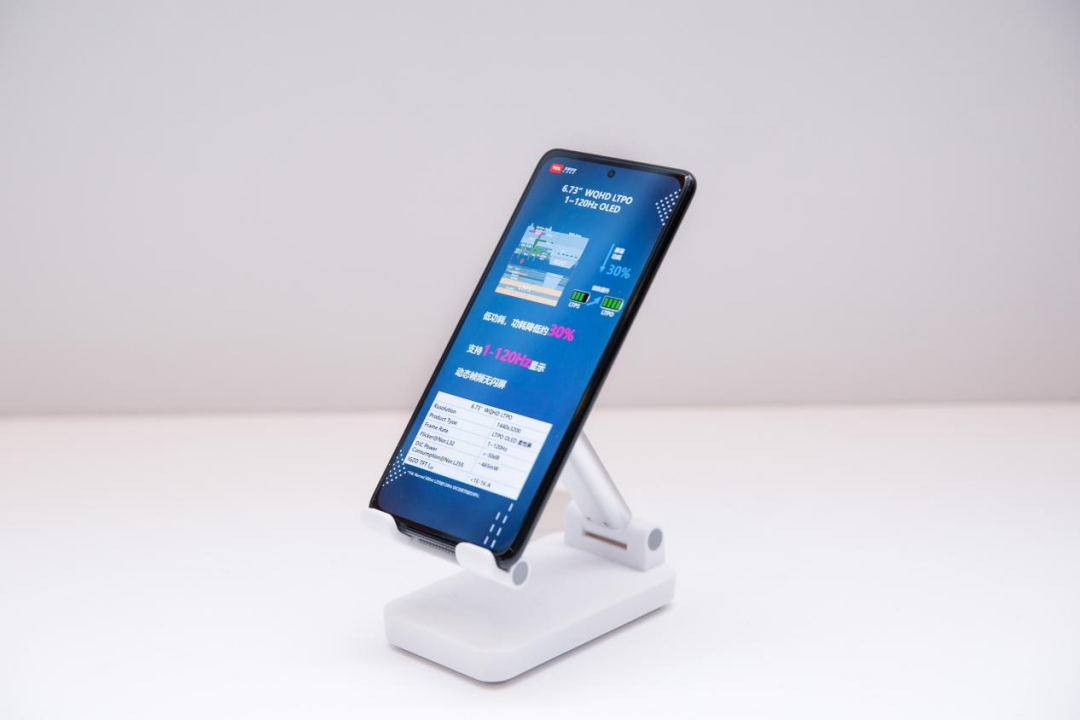
6.73" WQHD LTPO Demo
At the 2021 Global Display Ecology Conference (DTC), TCL CSOT first released the WQHD LTPO Demo with low power consumption and high range and support for 1~120Hz smooth and natural switching without flicker, and now at the technical level, TCL CSOT has achieved new breakthroughs in the technical fields of LTPO 1~144Hz ultra-wide frequency range switching, non-sensitive inverter direct cutting, WQHD LTPO+MLP (Micro Prism Light Concentration) low power combination, and more significant performance improvements in display effect, refresh rate switching, and power reduction. TCL CSOT has achieved new breakthroughs in technical fields such as low power consumption combination, and has made more significant improvements in performance such as display effect, refresh rate switching and power consumption reduction. In the future, TCL CSOT will lead the small size track and continue to provide users with better technology and services.
